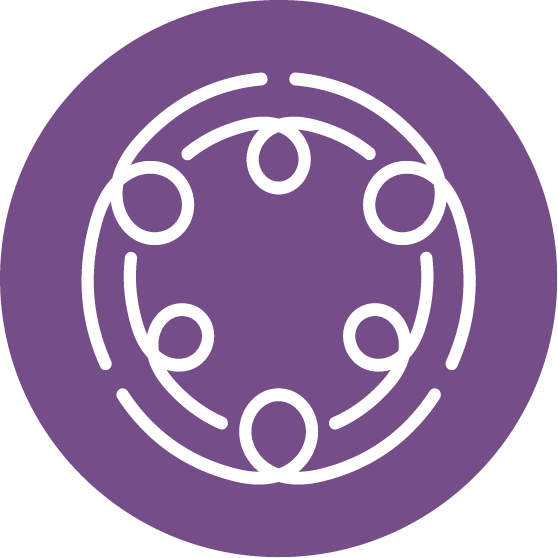Application Processes and Effective Family Philanthropy: No easy answers

You don’t know who you don’t know – Jay Espy, former CEO, Elmina B. Sewall Foundation
What does your application process say about you?
As the philanthropic field continues to evolve and explore critical issues including equity, accountability, relationship-building, listening, and trust-based approaches, the grants application process (or lack thereof) often serves as a focal point for both discussions and contention between funders and nonprofits. Some funders have an open application process whereby nonprofits submit an application for a grant, typically based on a set of eligibility criteria provided by the funder. Others do not accept applications and instead opt to invite a select group of potential partners to apply for funding. Some funders leverage different processes for different types of grants. Each approach has opportunities and challenges, and the decision about which approach makes sense for your philanthropy must be driven by your values and goals.
The most recent analysis of the nearly 100,000 funders in the Foundation Directory Online database revealed that only 28% accepted applications from nonprofits. Understanding that many of the funders listed in that database are very small organizations with few or no staff, the researchers narrowed their search to only foundations with at least $100 million in assets (those foundations combined account for the vast majority of foundation giving in any given year), and the number accepting applications increased to 58%.
Many funders and nonprofit leaders assert compelling arguments that failure to accept applications opens foundations to risks that include:
- Missing opportunities to fund important work, particularly new, smaller, or not-well-known partners, who are nevertheless doing innovative and vital work
- Perpetuating inequities, particularly as many foundations fund the same groups year over year
- Overlooking innovation and/or changes in the field. Unless you are continually scanning and/or researching the areas in which you fund, you may risk having your approaches go stale
- Not hearing from community leaders and organizations who are closest to the emerging issues and changing conditions that could inform the foundation’s work
On the other hand, there are circumstances where an invitation-only approach may make sense, such as:
- Organizations with few or no staff, which do not have the bandwidth to handle the masses of applications they might receive and would therefore have to give little attention to something that a nonprofit may have put significant effort into
- Philanthropies in the process of spending down that don’t want to build new relationships as they have committed their remaining funds to specific grantees
- Funders in a start-up phase who want to begin small and test out their funding strategy
As with many things in philanthropy, there are no easy answers, but as you consider which approach may make the most sense for you, we offer you some questions to consider within the principles of effective family philanthropy.
 Accountability
Accountability
- How are we reviewing organizations that we invite or apply for funding? Who has decision-making power? How are community concerns and voices informing our decisions?
- If we are an open-application organization, are our guidelines clear so that nonprofits aren’t wasting time applying for an area that seems like it might be a fit, but actually has a narrow meaning within our organization that we haven’t clearly described? For example, if we fund workforce development and supports for women who were recently incarcerated, are we describing our program as such and not under a vague description such as “criminal justice?”
- If we have an open application, are we assessing bias in our decision making? For example, are we comparing the percent of BIPOC-led organizations at the application stage versus the funded stage?
Equity
- Which process best reflects our commitment to equity?
- In general, larger, well-resourced nonprofits have an advantage in both invitation-only and open-application processes. These are not always representative of the communities they serve. How are we controlling for this kind of bias in our process?
- Who has informed which process we use? How are we weighing community needs and desires against our own convenience?
 Reflection & Learning
Reflection & Learning
- How often are we reviewing our process and/or asking for input from our applicants about how to improve it?
- How often do we ask ourselves if the application method we use is still the right fit for our philanthropy, our funding priorities, and community need?
- How can we use the application process to continue to broaden our knowledge of the areas we fund without exploiting the knowledge and expertise of the community?
 Relationships
Relationships
- What does our application process say about our approach to relationships with grantees, nonprofits, and the community?
- Are we using our application process as a way to build or deepen our relationship with our community or are we using it as a gatekeeping exercise for allocating resources?
- How are we building new relationships in an equitable and accountable manner to continue to broaden our knowledge of the field and community and consider new organizations to add to our invitation pool?
We invite you to consider these questions as you design a grants applications system that works for you, your grantees, and your potential grantees. Processes will vary from funder to funder, but all funders should take the time to question their process and whether it’s reflective of their values.
If you are interested in additional resources on best practices in grantmaking, we encourage you to join PEAK through a complimentary individual membership—open to all grantmaking professionals—and participate in the exchange of ideas, advice, and lessons learned with your colleagues.
Miki Akimoto is the Chief Impact Officer at NCFP and a former Director of Grants Management at the Annie E. Casey Foundation
